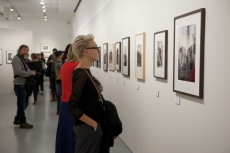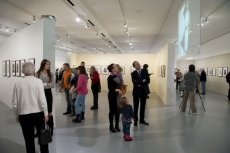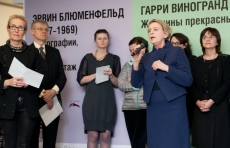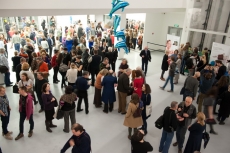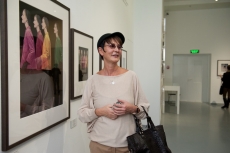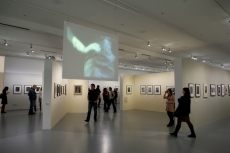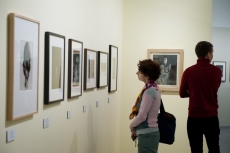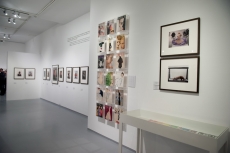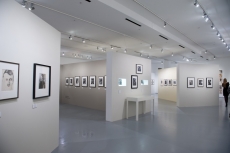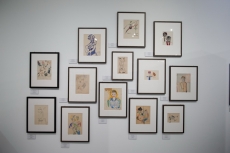Photographs, drawings and photomontages


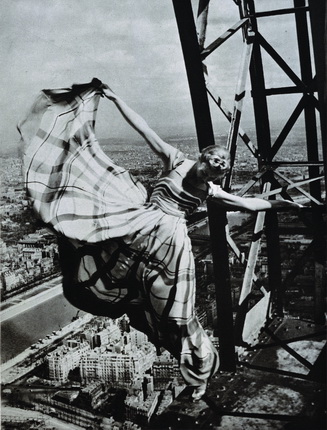
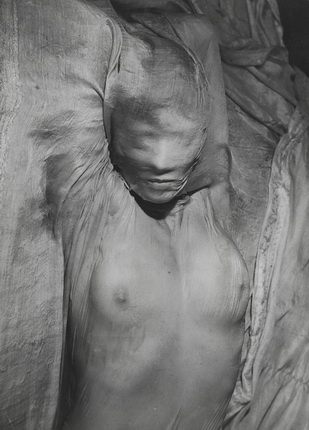
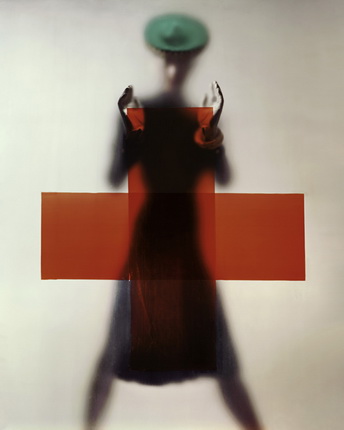
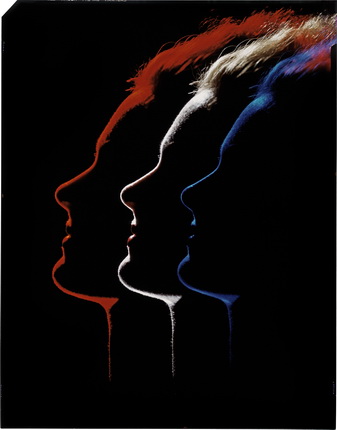
![Erwin Blumenfeld.
In hoc signo vinces [In this sign you will conquer].
1967.
Switzerland, Private collection.
© The Estate of Erwin Blumenfeld](/upload/iblock/4e4/4e400233ffdc1f1d73559f8bfe6a6a14.jpg)
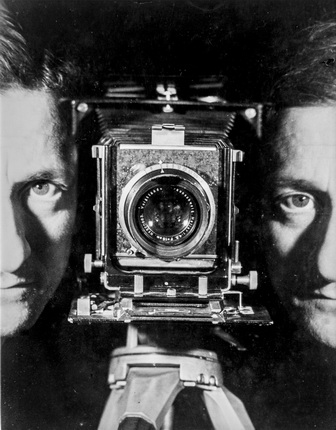
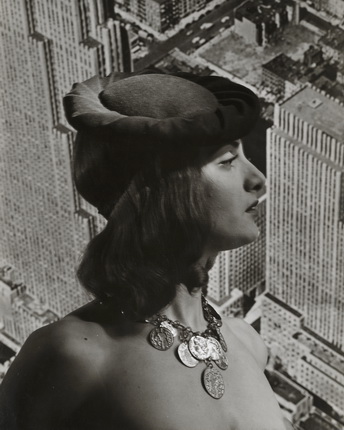
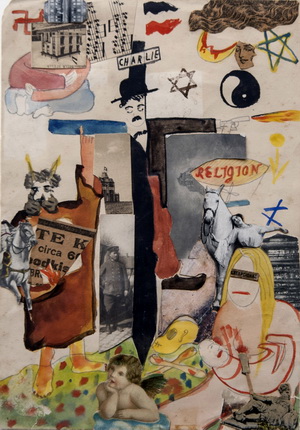
Erwin Blumenfeld. Audrey Hepburn, actress. New York, 1950s. Switzerland, Private collection. © The Estate of Erwin Blumenfeld
Erwin Blumenfeld. Cecil Beaton, photographer. 1946. Partial solarisation. Switzerland, Private collection. © The Estate of Erwin Blumenfeld
Erwin Blumenfeld. Lisa Fonssagrives on the Eiffel Tower. Paris, 1939. Modernism Inc., San Francisco. © The Estate of Erwin Blumenfeld
Erwin Blumenfeld. Nude Under Wet Veil. Paris, 1937. Switzerland, Private collection. © The Estate of Erwin Blumenfeld
Erwin Blumenfeld. Variation on the cover photograph of Vogue US, “Do Your Part for the Red Cross”, March 15th, 1945. Collection Henry Blumenfeld. © The Estate of Erwin Blumenfeld
Erwin Blumenfeld. Three profiles. Variation of the photograph published in the article “Color and lighting”, of Photograph Annual 1952. 1952. Collection Henry Blumenfeld. © The Estate of Erwin Blumenfeld
Erwin Blumenfeld. In hoc signo vinces [In this sign you will conquer]. 1967. Switzerland, Private collection. © The Estate of Erwin Blumenfeld
Erwin Blumenfeld. Self-Portrait. Paris, c. 1938. Collection Helaine and Yorick Blumenfeld. © The Estate of Erwin Blumenfeld
Erwin Blumenfeld. Natalia Pasco. New York, 1942. Collection Henry Blumenfeld. © The Estate of Erwin Blumenfeld
Erwin Blumenfeld. Charlie. 1920. Collage, ink, watercolor and pencil on paper. Collection Helaine and Yorick Blumenfeld. © The Estate of Erwin Blumenfeld
Moscow, 19.02.2014—11.05.2014
exhibition is over
Share with friends
Curator: Ute Eskildsen
For the press
«My real life started with the discovery of chemical magic, the play of light and shade, the two edged problem of negative and positive» — E. B.
Bringing together over two hundred fifty works and documents dating from the late 1910s to the 1960s, this exhibition, the first in Moscow to showcase the multilayered aspects of Erwin Blumenfeld’s oeuvre, encompasses the various media explored by the artist throughout his career: drawing, photography, montage, and collage.
The life and work of Erwin Blumenfeld (Berlin, 1897 — Rome, 1969) provides an impressive record of the socio-political context of artistic development between the two World Wars, while highlighting the individual consequences of emigration. Erwin Blumenfeld, a German Jew, only spent a few years in his country of birth. In 1919 he left for the Netherlands, where he married Lena Citroen. He began to take a deeper interest in photography, and above all the artistic possibilities offered by darkroom experiments. For a short while, he ran an Amsterdam-based portrait studio, before moving to Paris in 1936. The following year saw his first beauty cover, for Votre Beauté magazine. In 1938 he received a visit from leading fashion photographer Cecil Beaton, who helped him to obtain a contract with the French Vogue. Blumenfeld travelled to New York, returning in 1939 to become Harper’s Bazaar’s fashion correspondent in Paris. In 1940 he was interned as a German Jew in France. In 1941 he escaped with his family to the USA, where he subsequently lived and worked until his death.
It was in New York that Blumenfeld’s astonishing career as a much sought after, highly paid fashion photographer really took off. The contract he signed with the publishers Condé Nast in 1944 marked the beginning of ten years of remarkable photography and cover shots for various magazines. Following on from his black-and-white achievements of the 1930s, he began experimenting intensively with color. The present exhibition includes, besides photographs, both magazine work and early experimental films made for the Dayton department store in Minneapolis, his leading advertising customer.
Not until 1960 did Blumenfeld return to Berlin for a visit. He devoted the following years to finishing his autobiography, begun in the 1950s, but not published until 1975. His book My One Hundred Best Photos was also released posthumously, in 1979.
Ute Eskildsen
Drawings, Montages, and Collages
Between 1916 and 1933 Erwin Blumenfeld produced a fairly limited number of drawings and montages. As a young man he was very interested in literature, writing poems and short stories. And as early as 1915 he mentioned that he was interested in writing an autobiography.
Almost all of his montages and collages include drawings and snippets of language. He plays with written and printed words and typography, juxtaposing names, concepts, and places to create ironic commentaries and provocative titles. His collages typically combine drawing, language, and cut-outs of original or printed photographs. He also often used letter stationery to form a background, leaving bare spaces.
In 1918 Blumenfeld made the acquaintance of the Dadaist George Grosz; two years later he and Paul Citroen wrote to Francis Picabia in the name of the Hollandse Dadacentrale, but neither was present at the First International Dada Fair in Berlin in 1920. That same year, Blumenfeld began using the pseudonyms Erwin Bloomfeld and Jan Bloomfield, as documented in his Dadaist publications and in some of his collages.
The drawings in the present exhibition were produced in Berlin and the Netherlands. Only a handful of them are dated. They are quick sketches from life or from imagination, rough cartoons and acid caricatures, in pencil, ink, watercolour, or coloured pencil—whatever was to hand. Blumenfeld was clearly fascinated by the quality and immediacy of drawing as a medium, and, as these works reveal, it certainly stimulated his playful side.
Self-Portraits
Blumenfeld took his first photographs as a schoolboy, using himself as one of his first subjects. The earliest date from the 1910s, but he continued taking self-portraits to the end of his life. The young man with the dreamy gaze turned into the louche bohemian with a cigarette, then the carefully staged photographer experimenting with his camera. His self-portraits are not the product of excessive vanity, but rather playful experiments, with and without masks, models, and other grotesque objects such as a calf’s head, all used to create witty images.
Portraits
Blumenfeld’s first steps in professional photography were in portraiture. He started «learning by doing» in the early 1920s in Amsterdam, where he had opened the ladies handbag store Fox Leather Company. This is where he took portraits of customers, using a darkroom in the back of the store. Comparison of the contact sheets from the time with the blow-ups taken from them clearly shows, right from the outset, the importance in Blumenfeld’s work of the finishing in the lab. The final images display extremely tight framing, high levels of contrast, and lighting that creates dramatic, even devilish, effects. When he arrived in Paris in 1936 his first photographs were portraits, featuring among others Henri Matisse and Georges Rouault. Although he quickly entered the Paris fashion scene, he retained a strong interest in portraiture throughout the remainder of his life.
Nudes
Blumenfeld’s earliest, highly narrative nudes date from his time in the Netherlands, but the subject only became a passion during his Paris years from 1936 on, when he discovered the work of French avant-garde photographers. His admiration for them is particularly evident in his nude photographs, as is the influence of Man Ray’s work.
The bodies of the women in these images were surfaces onto which he projected his artistic imagination. He cut them up, solarised them, and transformed them into abstract imagery through the play of light and shadow. The faces of his nudes from the 1930s are only rarely visible, the women remaining somewhat mysterious entities. The nudes Blumenfeld produced in the 1950s tended to be more concrete, illustrative works.
Architecture
The black-and-white architectural photographs that Erwin Blumenfeld took in the 1930s feature buildings and urban spaces from various experimental and abstract perspectives. The Eiffel Tower, for instance, is captured in sharp reliefs of light and shade, while the photographs of Rouen Cathedral are intended to draw the viewer’s visual attention to the building’s specific forms. Blumenfeld expresses his artistic vision and his knowledge of Gothic architecture by focusing on the abstraction of details.
During the 1950s and 1960s Blumenfeld used a 35mm camera for cityscapes. The exhibition showcases three of these colour slide projects for the first time. They feature New York, Paris, and Berlin—three places that made a mark on his art and also shaped his career.
The Dictator
In 1933, according to his autobiography, Blumenfeld reacted to Hitler’s rise to power in Germany with a photomontage. This outstanding piece of work, probably his most famous photograph, symbolizes and anticipates the dictator’s dehumanization. Following on from the political themes in some of his early collages, he here combined different negatives—a skull and a portrait of Hitler—to make a single print. In one of these montages he included a swastika, while in a different portrait «bleeding eyes» were added later on the surface.
Later on, in Paris, he photographed a calf’s head, using this subject to compose different images. One in which he placed the animal’s head on a woman’s torso was titled The Minotaure or The Dictator. This image, which does not refer to a specific figure, is obviously intended to be allegorical. In 1941 Blumenfeld was able to escape from the Nazis with his family to New York.
Fashion
Blumenfeld’s move to Paris in 1936 marked the beginning of his career as a fashion photographer, although he had already had contacts with magazines in Paris while living in Amsterdam. The work that appeared in French publications in the late 1930s raised Blumenfeld’s profile as a modernist photographer and brought him to the attention of the famous British photographer Cecil Beaton, who visited him in his studio in 1938 and helped him sign his first contract with the French edition of Vogue. When Blumenfeld made his first trip to New York following his sensational set of fashion photographs on the Eiffel Tower, he came home with a new contract as Paris fashion correspondent for Harper’s Bazaar. He was only able to file his reports for a year before he was interned in various prison camps across France. In 1941 he was able to escape from German-occupied France to New York with his family. In the first half of the 1950s, he drew on his experiments in black-and-white photography to develop an exceptionally original artistic repertoire, reflected in his use of colour and his fashion work.


